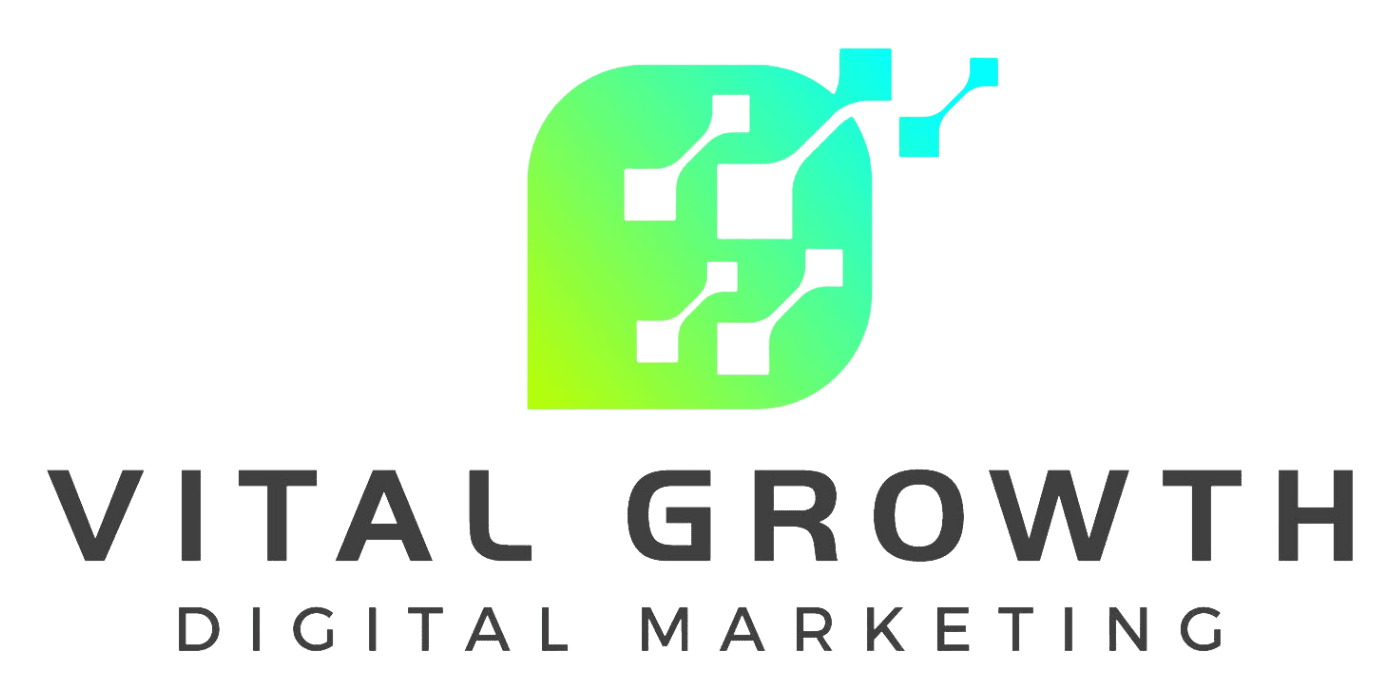Your success hinges on your ability to create content that not only captures attention, but also maintains it, prompting readers to return for more. Crafting compelling website content is both an art and a science which is no small feat, as it requires a harmonious blend of creativity, SEO knowledge, and a deep understanding of your audience’s needs and preferences.
Lucky for you, we are here to arm you with expert advice and proven strategies on how to write content for a website. This guide walks you through the process of creating compelling website content that resonates with your audience and improves your online visibility.
Website Content Key Takeaways
Understand your brand and purpose to create content that aligns with your business goals and resonates with your audience.
Identify and research your target audience, create audience personas, and understand their preferences and needs.
Analyze competitor content to identify trending topics and learn from their successes and failures.
Create a comprehensive content plan that includes a variety of content types and a consistent publishing schedule.
Write engaging and SEO-friendly content by using active voice, simple language, and incorporating relevant keywords.
Enhance your content with multimedia elements and formatting techniques such as headers, bullet points, and white space.
Edit and optimize your content using editing tools like Grammarly and Hemingway, and implement SEO best practices.
Keep your content fresh and up-to-date by monitoring industry trends, updating outdated information, and conducting A/B testing and content audits.
Understanding Your Brand and Purpose

Grasping your brand’s identity and purpose thoroughly is a prerequisite before stepping into content creation. This foundation will make sure your content aligns with your business goals and conveys a consistent message across your website.
Having a distinct brand identity allows you to differentiate yourself in the saturated digital market, and a definite purpose navigates your content creation process to ensure it provides value to your audience.
Developing a Strong Brand Identity
Establishing a strong brand identity begins by asking yourself a few essential questions:
- Why does your business exist?
- What makes you passionate about it?
- Why do your customers need it?
Answering these questions will give you a clear insight into your brand’s unique value proposition that can steer your content generation process.
Consider successful brands like Apple or Nike, which have built their identities around innovation and performance, respectively. Emulating their approach, you can create a memorable brand identity that resonates with your target audience.
Aligning Content with Your Purpose
Once you’ve established your brand identity, it’s time to align your content with your companies purpose. This means creating content that not only reflects your brand’s values and goals but also addresses the needs and preferences of your target audience. Doing so guarantees a uniform message across your website, vital for upholding credibility and fostering trust with your audience.
Remember, an engaged audience is more likely to become loyal customers and share your content with others, ultimately helping you achieve your business goals.
Identifying Your Target Audience

To create content that resonates with your audience, you must first identify and understand your target audience. This involves conducting audience research, creating audience personas, and analyzing competitor content.
Understanding your audience’s demographics, preferences, and challenges lets you customize your content to their requirements, turning your website into a valuable resource that encourages repeated visits from your ideal clientele.
Conducting Audience Research
Audience research is imporant for understanding your target audience’s preferences and needs. Sourcing data from:
Surveys
Social media analytics
Website analytics
- Market research reports
These will provide valuable insights into your audience’s demographics, interests, and behavior.
Tools like Google Analytics and SurveyMonkey can help you collect and analyze this data, allowing you to create content that is relevant and valuable to your audience.
Creating Audience Personas
With your audience research in hand, you can now create audience personas – semi-fictional representations of your ideal customers. These personas should include details like:
Age
Demographic information
Profession
Objectives
Pain points
Purchasing habits
Crafting audience personas gives a clear picture of your target audience, enabling you to customize your content effectively to meet their needs and preferences.
Analyzing Competitor Content

Analyzing competitor content is an invaluable step in creating your own content that stands out in the market. By assessing your competitors’ successes and failures, you can identify trending topics, discover audience needs, and uncover areas where you can outperform your competition. This information will help you create content that not only resonates with your audience but also positions your brand as a thought leader in your industry.
Discovering Trending Topics
Competitor research tools like ahrefs, Semrush, and BuzzSumo can help you discover popular topics and content formats in your industry. By analyzing your competitors’ content, you can identify what resonates with your target audience and generate content ideas that fill gaps in the market.
Keep in mind that it’s not about copying your competitors, but rather learning from their successes and failures to create your own unique and engaging content.
Learning from Competitor Successes and Failures
Use your competitor analysis to learn from their successes and failures. Identify what works well and what doesn’t in their content, and use this information to optimize your own content strategy. For example, if you notice that your competitors’ infographics are generating a lot of engagement, consider incorporating more visual content into your own strategy.
By learning from your competitors, you can create content that stands out and addresses your audience’s needs more effectively.
Crafting a Content Plan

A content plan is essential for organizing and executing your content creation efforts. This plan should include a variety of content types, such as:
Blog posts
Videos
Infographics
Case studies
Testimonials
Your content plan should also include a consistent publishing schedule to keep your website fresh and engaging.
Formulating a content plan ensures your content stays focused, pertinent, and valuable to your audience, facilitating the achievement of your business goals.
Choosing Content Types
When selecting content types for your plan, consider what formats resonate most with your audience. For example, you might find that your audience prefers long-form blog posts or infographics over videos. Experiment with different content types and monitor engagement metrics to determine what works best for your target audience.
Content diversification maintains audience engagement and meets their diverse preferences and needs.
Setting a Publishing Schedule
Establishing a regular publishing schedule is crucial for maintaining consistency and keeping your audience engaged. Aim to publish one to two high-quality blog posts per week, and ensure you stick to your schedule for each blog post. Learning how to post effectively is essential for success in the blogging world.
Consistency in your publishing schedule not only helps you stay top of mind with your audience but also signals to search engines that your website is regularly updated, which can positively impact your SEO efforts.
Writing Engaging and SEO-Friendly Content

Now that you have a solid content plan in place, it’s time to start writing. Employ active voice, simple language, and relevant keywords for creating engaging and SEO-friendly content. These techniques will improve readability and search engine rankings, ensuring your content is both captivating to your audience and visible in search results.
Note that a balance between engaging content writing and SEO optimization is the key to successful web writing, and being able to effectively write content plays an impotrant role in this process of writing content for your website.
Using Active Voice and Simple Language

Using active voice and simple language makes your content more engaging and easier to understand. Active voice creates a more direct connection with the reader, while simple language ensures your content is accessible to a broad audience. To achieve this, write short sentences, use bullet points, and break up your text into short paragraphs.
Such measures increase the scannability and digestibility of your content, sustaining reader engagement and interest.
Keep The Content Easy To Read
Employ headers, bullet points, and white space for breaking up large text blocks and enhancing readability. Headers help guide readers through your content, while bullet points and white space make it more visually appealing and easier to digest. Implementing these formatting techniques not only improves the readability of your content but also enhances the overall user experience, keeping your audience engaged and coming back for more.
Incorporating Relevant Keywords

Inclusion of pertinent keywords in your content is extremely imporant for enhanced search engine visibility. Use keyword research tools like Google Keyword Planner, SEM Rush, Uber Suggest, or Ahrefs to identify popular search terms related to your topic, and incorporate them naturally within your content. Be careful not to overuse keywords, as this can lead to keyword stuffing – a practice that can negatively impact your search engine rankings.
Instead, focus on creating high-quality, relevant content that naturally includes your target keywords.
Enhancing Content with Multimedia and Formatting
Enhancing your content with multimedia elements and formatting can make it more visually appealing and easier to digest. By incorporating images, videos, and infographics, you can illustrate your points and keep your audience engaged. Additionally, using headers, bullet points, and white space helps break up large blocks of text, making your content more scannable and reader-friendly.
Such elements, including internal links, not only refine the user experience but also aid in improving search engine rankings.
Utilizing Images, Videos, and Infographics
Images, videos, and infographics are powerful tools for illustrating your points and keeping your audience engaged. They can help break up large blocks of text, making your content more visually appealing. When incorporating multimedia elements into your content, make sure they are relevant to your topic and of high quality.
Poorly chosen or low-quality visuals can detract from the overall user experience and undermine the credibility of your content.
Applying Headers, Bullet Points, and White Space

The use of headers, bullet points, and white space is valuable in enhancing the scannability and readability of your content. Headers help guide readers through your content, while bullet points and white space make it more visually appealing and easier to digest.
When using headers, make sure they accurately represent the content of each section and include relevant keywords where possible. Bullet points should be used to highlight key points or benefits, while white space should be used to break up large blocks of text and create a sense of balance on the page.
Editing and Optimizing Your Content
Editing and optimizing your content is another extemely imporant step in the content creation process. Leveraging editing tools such as Grammarly or Hemingway and adopting SEO best practices enables you to produce clear, accurate, and search engine-visible content. This not only helps improve the overall quality of your content but also contributes to better search engine rankings, driving more traffic to your website and increasing the likelihood of conversions.
Using Editing Tools
Editing tools like Grammarly and Hemingway can help you check for grammar, spelling, and readability issues in your content. Grammarly uses advanced algorithms and artificial intelligence to identify and correct grammar and spelling mistakes, while Hemingway highlights sentences that are difficult to understand and offers suggestions for improvement.
Utilizing these tools guarantees polished, professional, and easy-to-read content.
Implementing SEO Best Practices

Implementing search engine optimization best practices can help improve your content’s search engine rankings. Here are some tips to follow:
Incorporate relevant keywords naturally within the content.
Optimize page titles and meta descriptions.
Create internal and external links to boost your content’s visibility in search results.
By following these tips, you can increase the chances of your content being found by search engines and reaching a wider audience.
Adhering to these guidelines increases the chances of user discovery and enhances your website’s overall performance.
Keeping Content Fresh and Up-to-Date
Regularly updating your content is vital to sustain reader engagement and remain relevant in your industry. By monitoring industry trends, updating outdated information, and conducting A/B testing and content audits, you can ensure your content remains valuable and interesting to your audience.
Remember, a website with outdated or irrelevant web content is less likely to attract and retain site visitors, which can negatively impact your search engine rankings and overall online presence on your web page. To avoid this, make sure to regularly update and maintain your web pages.
Monitoring Industry Trends and Updates
Being informed about industry trends and updates is an amazing way to maintain the relevancy and value of your content to your audience. Regularly review industry publications, blogs, and social media to stay up-to-date on the latest developments in your field.
Incorporating these trends into your content positions your brand as a thought leader and equips your audience with the necessary information for making informed decisions.
Conducting A/B Testing and Content Audits

Conducting A/B testing and content audits can help you identify areas for improvement and optimize your website’s performance. A/B testing allows you to compare the performance of two versions of a piece of content, providing valuable insights and feedback from real users.
Content audits involve reviewing your existing content to make sure it is accurate, up-to-date, and relevant to your audience. Conducting these tests and audits enables data-driven decision making and fine-tuning of your content strategy for improved results.
Wrapping Up and Gearing Up for the Next Adventure
Creating compelling and SEO-friendly content for your website is a multi-faceted process. It starts with understanding your brand’s identity and purpose, then identifying and researching your target audience. Analyzing your competitors’ content helps you spot industry trends and learn from their successes and failures. Crafting a complete content plan and writing engaging, SEO-friendly content comes next, followed by enhancing your content with multimedia elements and formatting techniques. Editing and optimizing your content is an important step, while keeping your content fresh and up-to-date ensures its continued relevance and effectiveness.
Contact Vital Growth Digital Marketing Today!
Striking the right balance between engaging writing and effective SEO optimization is key. You don’t have to navigate this complex process alone. If you’re looking for professional help with search engine optimization and content creation, don’t hesitate to contact Vital Growth Digital Marketing.
Our team is ready to help you create content with our content creation services that not only resonates with your audience but also improves your search engine rankings and overall online presence.
How do I start writing web content for my website?
Begin by utilizing the “Inverted Pyramid” style of writing and keep it concise. Write in simple terms and avoid marketing lingo, while also incorporating keywords, headings, and paragraphs to divide ideas. Lastly, make sure the text is skimmable so readers can easily comprehend your content.
How can I create content that is both engaging and friendly for search engines?
Understand your brand and target audience, analyze competitor content, and create a content plan. Then use active voice, simple language, and relevant keywords to make content both engaging and SEO-friendly.
What are some effective editing tools for content writers?
Grammarly and Hemingway are effective editing tools for content writers to identify spelling and grammar errors, as well as to improve readability of their writing.
How can I keep my blog post content fresh and up-to-date?
Stay on top of industry trends and updates, ensure your content is up to date, and evaluate the success of your content through A/B testing and content audits in order to maintain fresh, relevant content for your readers.
How can multimedia elements and formatting enhance my content?
Multimedia elements such as images, videos and infographics, as well as formatting like headers and bullet points, can make your content more visually appealing and easier to digest, helping readers absorb the information quickly and effectively.












